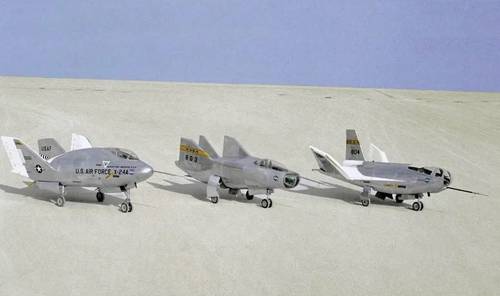▲ Lift-fuselage aircraft.Europe Press Pictures
European press
La Jornada newspaper
Saturday, March 16, 2024, p. 5
Madrid. NASA is considering restoring a wingless, non-powered aircraft design dating back to the 1960s to collect atmospheric data on other planets.
John Podilsky, chief scientist at Armstrong Flight Research Center, hypothesizes that the lift-body design that NASA tested decades ago could meet the requirements of an atmospheric probe that could collect measurements of giant planets, such as Uranus. The design relies on the shape of the plane for lift, not the wings.
He presented his idea and received an award from the NASA Armstrong Center Innovation Fund to write a white paper explaining the concept and design. The award also supports the construction of models to help visualize their atmospheric probe.
Robert network Jensen and Justin Hall, two of the laboratory's designers, technicians and pilots, brought Budilsky's designs to life. They made a mold, then covered it with carbon fiber and foam that had cured for eight hours in a vacuum. The pieces were dismantled, polished and later joined together.
The first two aircraft have been completed, measuring 70cm long and 61cm wide, and provide a first look at the concept. The second is almost ready and includes articulated flight control surfaces. Flight control systems connected to those surfaces will be installed inside the hull before final assembly of the model.
Together, the two models could test Podilsky's ideas and provide flight data to create better computer models, according to the space agency.
In the future, these computer models could help researchers build atmospheric sensors based on these designs. Budilsky's concept called for sending the aircraft on docked missions with satellites. Once in the planet's orbit, the probe plane (which is about the same size as the models) separates from the satellite using fire bolts and spreads into the atmosphere to collect data for study.
Current atmospheric sensors, small satellites known as CubeSats, collect and transmit data for about 40 minutes and can capture about 10 data points before their main satellite is out of range.
Podilsky's design could descend more quickly and at a steeper angle, collecting the same information in 10 minutes, plus another 30 minutes of additional data from much deeper in a thick atmosphere.
After a series of technical briefings and flight readiness reviews, the aircraft is expected to fly in March. It will do so as a glider launched from a base attached to a helicopter the laboratory typically uses. Future tests could include flights based on the data researchers determine they need.
We're looking to take an idea to flight and prove that a crane-body aircraft can fly like a lander on this scale: that it can be stable, that the components can be integrated into the lander, and that the aircraft can achieve a certain amount of climb.
Podilsky said.

“Social media evangelist. Student. Reader. Troublemaker. Typical introvert.”





:quality(85)/cloudfront-us-east-1.images.arcpublishing.com/infobae/2HYBRDRZ4VCXXAHGURFTENKX3A.jpg)

More Stories
Science requested a report on the research activity of Juan Manuel Corchado before his election as Dean of USAL
This is how stress affects your skin: find out how you can combat it
They recognize the role of the University of Medical Sciences in Holguin